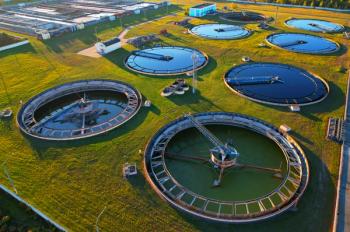
E-Separation Solutions
- E-Separation Solutions-06-10-2010
- Volume 0
- Issue 0
Regeneration for Polymeric Columns
What is the best way to regenerate a polymeric column?
The answer to the following question was provided by LCGC’s “Column Watch” editor Ron Majors.
Q: What is the best way to regenerate a polymeric column?
A: Polymeric columns used to separate biological molecules can also become contaminated or require sanitization. The chemical stability of polymeric materials is generally considered one of their strengths. In fact, many manufacturers recommend washing their columns with 1.0 M nitric acid or 1.0 M sodium hydroxide. Certain reversed-phase polymeric columns such as those packed with poly(styrene–divinylbenzene) (PS–DVB) beads and polymeric monoliths can withstand a wide range of pH values (usually pH 1–13 or sometimes pH 0–14), but users should exercise some care when washing these columns with harsh organic solvents. Depending upon their degree of cross-linking, swelling or shrinking can occur when the columns are exposed to some organic solvents. Highly cross-linked polymers with greater than 8–10% crosslinking usually have good mechanical stability with minimal shrinking in aqueous solvents and minimal swelling in organic solvents. Before washing a polymer column with a series of solvents, however, it is a good practice to consult the column’s manual or contact the technical support group of the column’s manufacturer.
Users can regenerate a polymer-based monolithic column made of PS–DVB by:
• washing the column with 10 column volumes of 0.1% trifluoroacetic acid in 2-propanol at one-half of the working flow rate
• washing the column with at least five column volumes of 100% mobile phase B at one-half of the working flow rate
• re-equilibrating the column with at least 10 column volumes of 100% mobile phase A at the working flow rate.
If a methacrylate-based monolith with butyl or ethyl chemistry is cleaned, precipitated protein can be removed by flushing the column in a reversed direction with 10 column volumes each of 1.0 M sodium hydroxide, water, 20% ethanol solution and the working buffer (1). For more-hydrophobic proteins, users should insert a wash step of isopropanol (30% v/v) or 70% ethanol (v/v) after the water wash.
For sanitization or the inactivation of microbial populations, a PS–DVB monolithic column should be thoroughly washed with 0.5–1.0 M sodium hydroxide. The packed monolith column should be exposed to sodium hydroxide for at least 1 h at room temperature.
Columns with traditional polymer-based packing materials used to separate difficult proteins such as membrane proteins, structural proteins and viral-coat proteins that are very insoluble require harsh cleaning conditions. For example, a solvent such as 50% isopropanol with 3 M guanidine hydrochloride at 60 °C might be necessary to elute such difficult proteins (2).
The cleavage of synthetic peptides from solid-phase resins generates reactive carbonium ions that are scavenged by anisole and thioanisole. The scavenger carbonium reactions yield large, aromatic molecules that can foul reversed-phase columns during peptide purification. These contaminants are highly retained on C18 columns and cannot be removed with 100% acetonitrile or methanol. To clean these columns, reverse them and wash them with three to five column volumes of 100% isopropanol, three to five column volumes of methylene chloride, three to five volumes of isopropanol, and then the original solvent system (3). The elution of aromatic impurities can be verified with a UV detector at 260 nm.
(1) Specific Information Sheet for CIM C4 Disk,” publication number PSIS-C4D-0702, BIA Separations (Ljubljana, Slovenia, 2002).
(2) “A New Chemically Resistant and Heat-Stable Reversed-Phase Column for Protein and Peptide Separations,” Vydac application note number 9702, Grace Vydac (Hesperia, California, February 1997).
(3) “Cleaning of Reversed-Phase Columns Used for Synthetic Peptides,” Vydac application note number 9603, Grace Vydac (Hesperia, California, March 1996).
If you have a question you'd like answered, please submit them at
Articles in this issue
over 15 years ago
High Content Screeningover 15 years ago
Chiral Separationsover 15 years ago
58th ASMS Conference ReviewNewsletter
Join the global community of analytical scientists who trust LCGC for insights on the latest techniques, trends, and expert solutions in chromatography.





